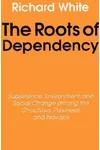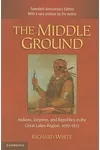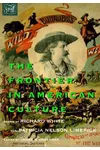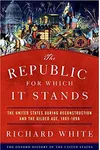Picture a historian who turned the American West into a vivid tapestry of stories, challenging everything we thought we knew about cowboys, Native Americans, and railroads—meet Richard White! As the Margaret Byrne Professor of American History Emeritus at Stanford University, White’s groundbreaking works, like The Middle Ground, weave environmental, cultural, and economic threads into a fresh narrative that’s reshaped how we see history.
With a knack for uncovering hidden patterns and a disciplined daily writing routine, White’s scholarship is both rigorous and revolutionary. His ability to make the past feel alive and strange has earned him accolades and a lasting place in historical studies. Let’s dive into the life and legacy of this trailblazing historian!
The Making of Richard White
Born in 1947, Richard White grew up with a curiosity sparked by the world around him. He earned his bachelor’s degree from the University of California, Santa Cruz, in 1969, before heading to the University of Washington for his M.A. and Ph.D. His early involvement with the Nisqually Indians’ fishing rights struggle in Washington State ignited a passion for Native American history, setting the course for his career. Teaching stints at Michigan State University, the University of Utah, and the University of Washington honed his craft before he joined Stanford in 1998.
White’s undergraduate years at UC Santa Cruz taught him to think boldly and take risks, a mindset that carried into his innovative approach to history. His encounters with the Nisqually, who spoke of centuries-old events as if they were yesterday, inspired him to explore how the past shapes the present.
Richard White’s Unforgettable Histories
White’s books are like time machines, transporting readers to the complex worlds of the American West, Native American communities, and Gilded Age capitalism. His seminal work, The Middle Ground: Indians, Empires, and Republics in the Great Lakes Region, 1650–1815 (1991), reimagines the interactions between Native Americans and European settlers as a shared space of negotiation and adaptation. It earned a Pulitzer Prize nomination and multiple awards, including the Francis Parkman Prize.
Railroaded: The Transcontinentals and the Making of Modern America (2011), another Pulitzer finalist, exposes the gritty reality behind the transcontinental railroads, revealing corruption and economic upheaval. White’s The Republic for Which It Stands (2017) tackles Reconstruction and the Gilded Age, painting a vivid picture of a fractured nation. His latest, Who Killed Jane Stanford? (2022), blends true crime with historical intrigue, unraveling a Gilded Age murder mystery. White’s style—meticulous yet accessible—makes history feel urgent and alive, challenging readers to see the past as a strange, unfamiliar place.
As the founding director of Stanford’s Spatial History Project, White embraced digital tools to map historical patterns, influencing how historians analyze data. His work spans environmental history, Native American studies, and the history of capitalism, often spilling into Canada, Mexico, and beyond.
Why Richard White Matters
Richard White’s impact lies in his ability to rewrite the narrative of the American West, moving beyond myths of rugged individualism to reveal interconnected stories of people, land, and power. His scholarship has inspired historians to question traditional frameworks and embrace interdisciplinary methods. Awards like the MacArthur Fellowship (1995) and Mellon Distinguished Professor Award reflect his influence, while his leadership in the Organization of American Historians amplified his voice.
White’s work reminds us that history isn’t a cozy echo of the present—it’s a strange, complex world that demands curiosity and humility. His legacy continues to shape how we understand America’s past and its enduring challenges.
About Richard White
- Born: May 28, 1947
- Key Works: The Middle Ground, Railroaded, The Republic for Which It Stands, Who Killed Jane Stanford?
- Awards: MacArthur Fellowship (1995), two-time Pulitzer Prize finalist, Francis Parkman Prize (twice)
- Notable Role: Founding director of Stanford’s Spatial History Project
Ready to explore the American West through a new lens? Grab The Middle Ground or Who Killed Jane Stanford? and dive into Richard White’s captivating histories!










